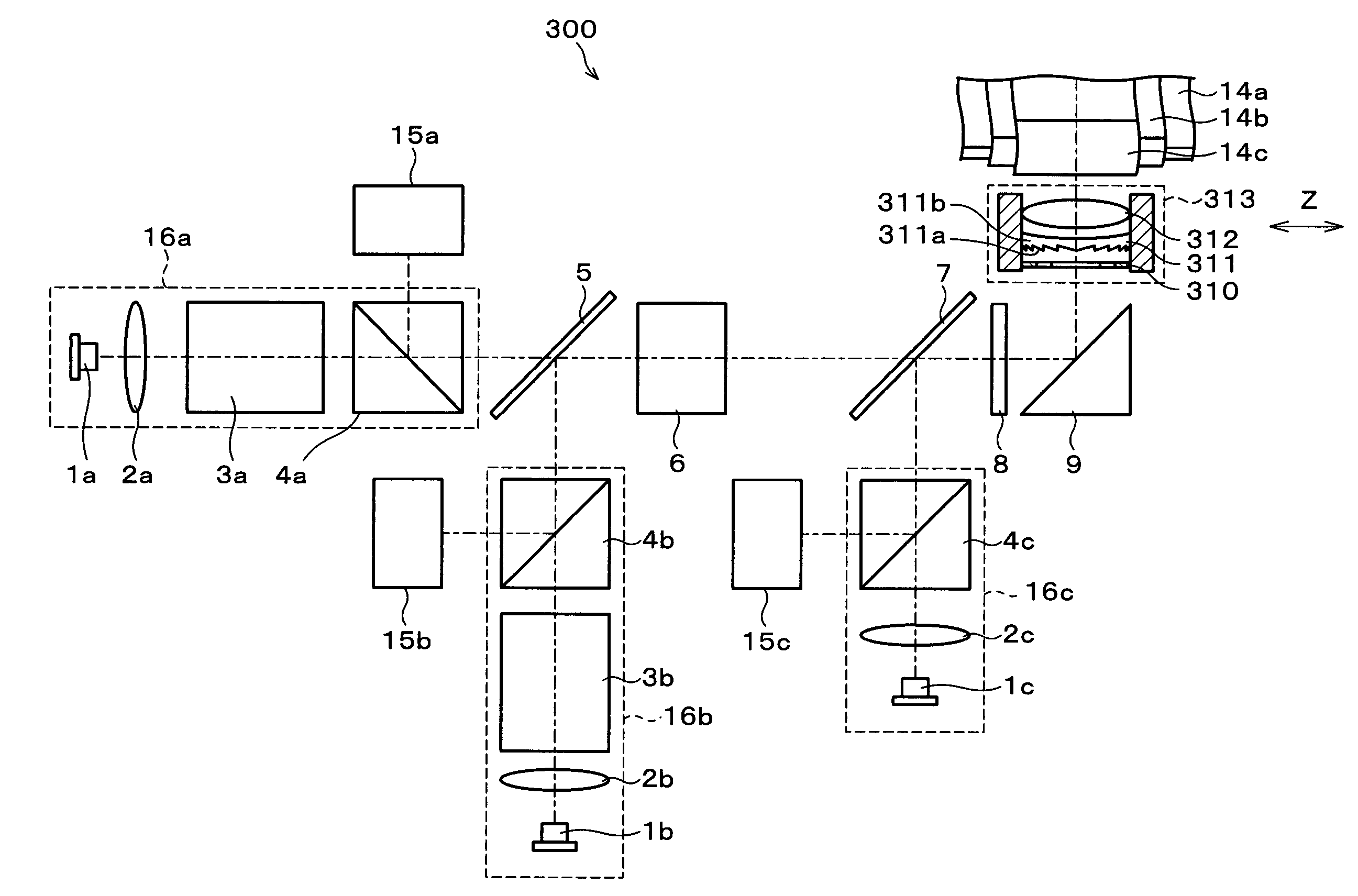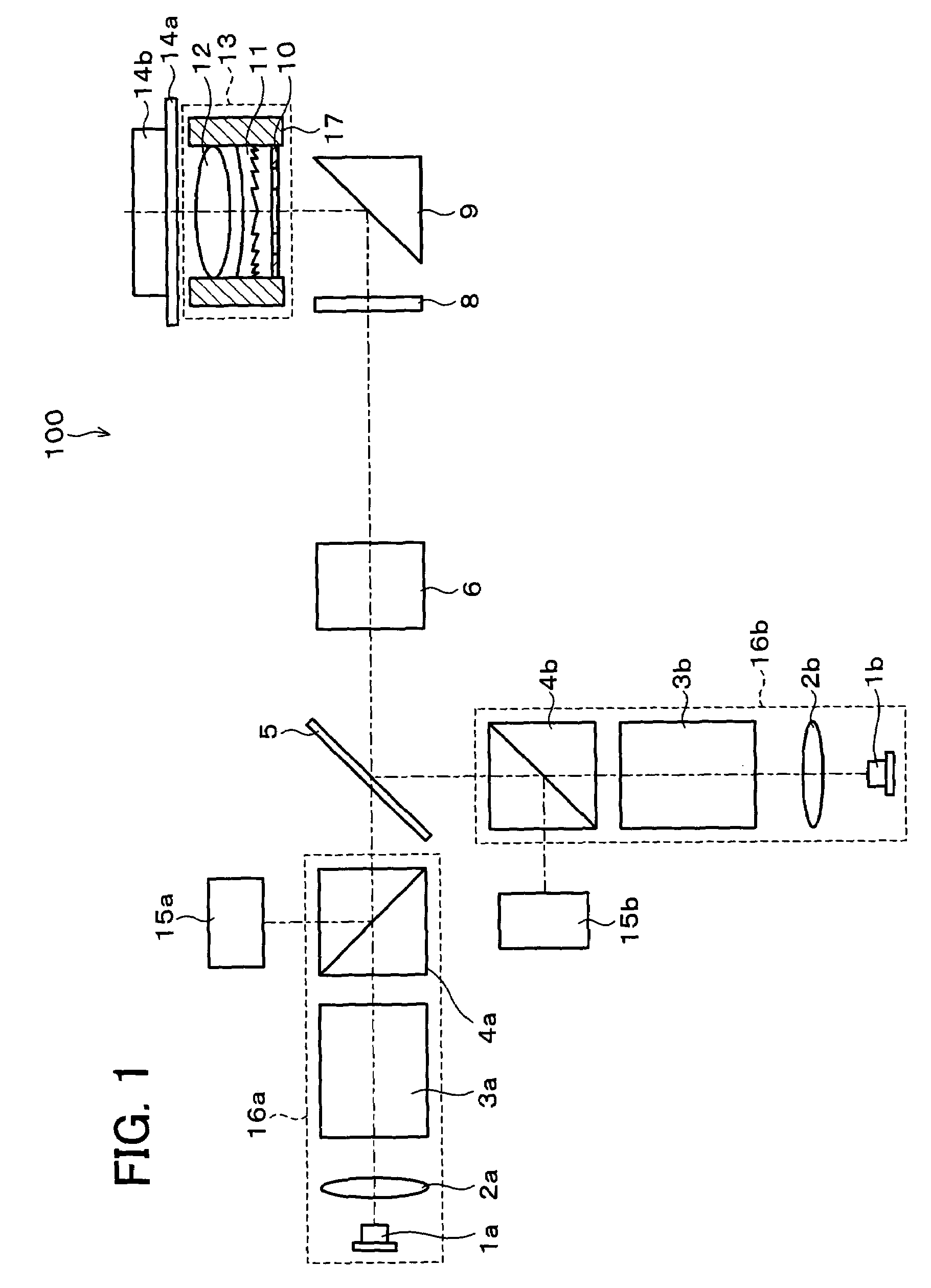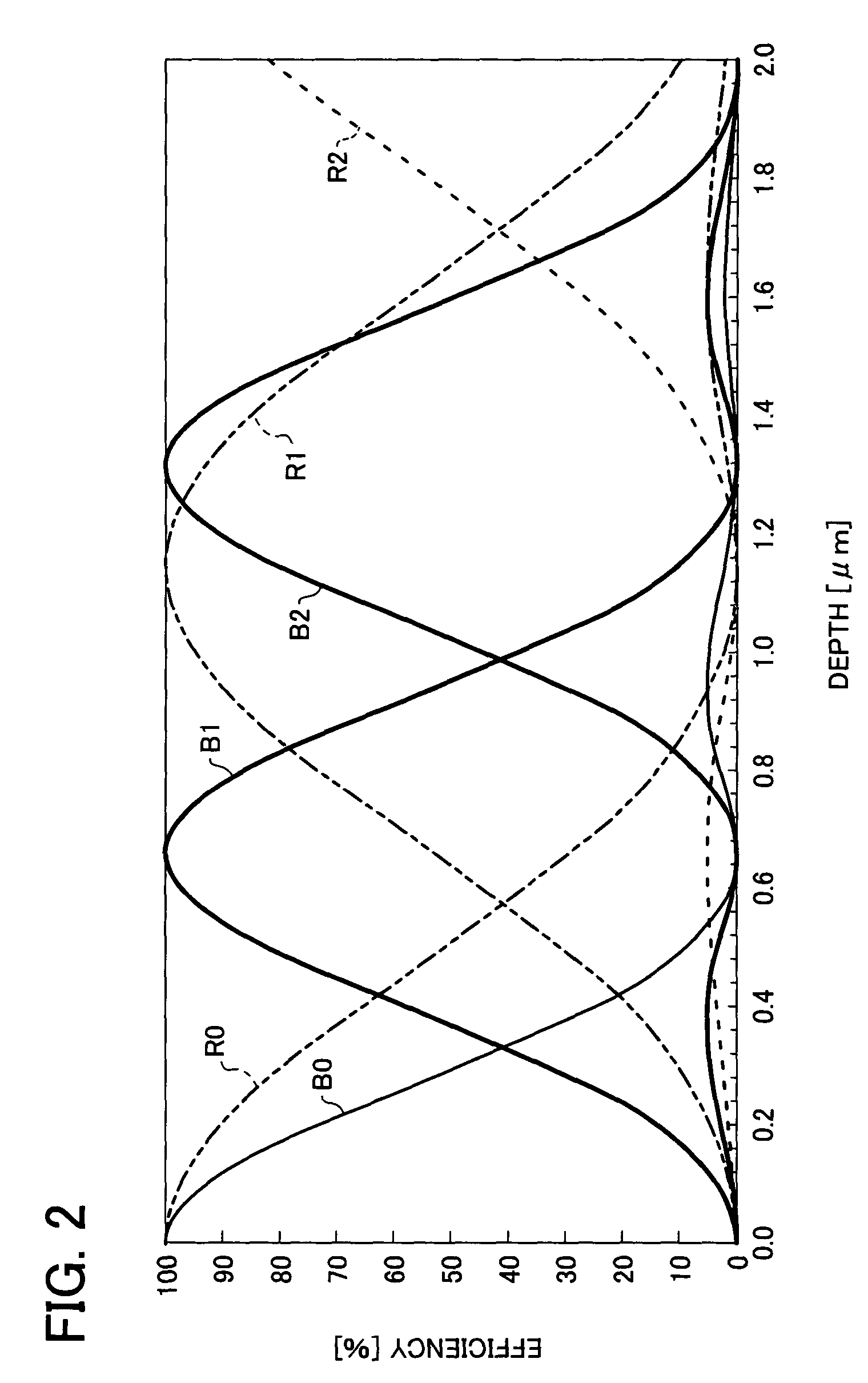Optical pickup that uses light sources with different wavelengths for each of multiple recording mediums
a technology of optical pickup and recording medium, which is applied in the direction of optical beam sources, data recording, instruments, etc., can solve the problems of affecting the compatibility with different kinds of optical disks, and affecting the focusing characteristic of the aperture spot, so as to prevent the focusing characteristic from being severely impaired, the effect of suppressing the displacement of the focal poin
- Summary
- Abstract
- Description
- Claims
- Application Information
AI Technical Summary
Benefits of technology
Problems solved by technology
Method used
Image
Examples
first embodiment
[0103]FIG. 1 illustrates a schematic structure of an optical pickup 100 of the present embodiment. The description of the present embodiment will be given based on the optical pickup 1 that is compatible with a next-generation high-density optical disk 14a (first optical disk, first recording medium) and a conventional DVD 14b (second optical disk, second recording medium).
[0104]The first optical disk uses blue light (first light beam) of a short wavelength in the vicinity of 405 nm (first wavelength λ1 ), and has a light transmissive layer with a thickness t1=0.1 mm. The second optical disk uses red light (second light beam) of a long wavelength in the vicinity of 650 nm (second wavelength λ2), and has a light transmissive layer with a thickness t2=0.6 mm.
[0105]The optical pickup 100 includes a semiconductor laser 1a that emits a first light beam 1 of the first wavelength λ1, and a semiconductor laser 1b that emits a second light beam 2 of the second wavelength λ2 longer than λ1. T...
example 1
[0133]In this Example, the optical pickup 100 described in the foregoing First Embodiment includes a diffraction optical element 11 which is realized by a lens 116 that contains a diffraction grating 11a and a convex face 11c, as shown in FIG. 6(a) and FIG. 6(b), the diffraction grating 11a being disposed on the side of a light source. It is assumed in the following description that the base material (lens) of the diffraction optical element 11 is polycarbonate (PC), and the diffracted rays of the first light beam (λ=405 nm) and the second light beam (λ=650 nm) used are of the first order.
[0134]As shown in FIG. 6(a), a parallel ray of the laser beam (first light beam) of 405 nm wavelength incident on the diffraction optical element 11 diffracts on the face of the diffraction grating 11a in a direction of the first order diffraction (diverging direction). The first light beam then refracts as it passes through the convex face 11c and emerges from the diffraction optical element 11c a...
example 2
[0148]In this Example, the optical pickup 100 described in the foregoing First Embodiment includes, as shown in FIG. 7(a) and FIG. 7(b), an objective lens unit 113, instead of the objective lens unit 13 of the foregoing Example 1. That is, the optical pickup includes a diffraction optical element 111 which is realized by a lens 111b made with a concave face 111c and a diffraction grating 111a, the diffraction grating 111a being disposed on the side of a light source. The base material (lens) of the diffraction optical element 111 is polycarbonate (PC), and the face of the diffraction grating 111a of the diffraction optical element 111 satisfies Equation (11) below.
[0149]sin-1(m1λ1d)-sin-1(m2λ2d)>0,(11)
where m1 is the diffraction order of the first diffracted light, m2 is the diffraction order of the second diffracted light, and d is the groove separation of the diffraction grating. It is assumed in the following description that the diffraction order m1 of the first diffracte...
PUM
| Property | Measurement | Unit |
|---|---|---|
| thickness | aaaaa | aaaaa |
| thickness | aaaaa | aaaaa |
| wavelengths | aaaaa | aaaaa |
Abstract
Description
Claims
Application Information
 Login to View More
Login to View More - R&D
- Intellectual Property
- Life Sciences
- Materials
- Tech Scout
- Unparalleled Data Quality
- Higher Quality Content
- 60% Fewer Hallucinations
Browse by: Latest US Patents, China's latest patents, Technical Efficacy Thesaurus, Application Domain, Technology Topic, Popular Technical Reports.
© 2025 PatSnap. All rights reserved.Legal|Privacy policy|Modern Slavery Act Transparency Statement|Sitemap|About US| Contact US: help@patsnap.com



